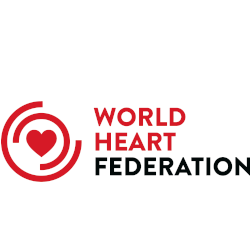Original Research
20-Year Trend of CVD Risk Factors: Urban and Rural National Capital Region of India
Abstract
Background: The World Health Organization and the Government of India have set targets to reduce burden of noncommunicable diseases. Information on population level trend of risk factors would provide insights regarding the possibility of achieving them.
Objective: This study aimed to determine the population trends of cardiovascular disease risk factors in the National Capital Region of Delhi over 2 decades.
Methods: Two representative cross-sectional surveys were conducted among men and women ages 35 to 64 years, residing in the urban and rural areas (survey 1 [1991 to 1994] and survey 2 [2010 to 2012]) using similar methodology. The urban sample was collected from the Municipal Corporation of Delhi, and the rural sample was from the Ballabgarh block of the adjoining state of Haryana. A total of 3,048 and 2,052 subjects of urban areas and 2,487 and 1,917 subjects of rural areas were surveyed in surveys 1 and 2, respectively. Behavioral (smoking and alcohol use), physical (overweight, abdominal obesity, and raised blood pressure), and biochemical risk factors (raised fasting blood glucose and raised total cholesterol) were measured using standard tools.
Results: Urban and rural prevalence of overweight, alcohol use, raised blood pressure, and blood glucose increased with increases in age-standardized mean body mass index (urban: 24.4 to 26.0 kg/m2; rural: 20.2 to 23.0 kg/m2), systolic blood pressure (urban: 121.2 to 129.8 mm Hg; rural: 114.9 to 123.1 mm Hg), diastolic blood pressure (urban: 74.3 to 83.9 mm Hg; rural: 73.1 to 82.3 mm Hg), and fasting glucose (urban: 101.2 to 115.3 mg/dl; rural: 83.9 to 103.2 mg/dl). The smoking prevalence increased in the rural male population. Raised total cholesterol declined in urban and increased significantly in rural populations.
Conclusions: The study indicates an overall worsening of population levels of all cardiovascular disease risk factors in National Capital Region over past 20 years, though some signs of stabilization and reversal are seen in urban Delhi.
Highlights
- This is the first repeat cross-sectional study from India that measures CVD risk factors in a representative sample in urban and rural populations using the same methodology to assess secular trends in the prevalence of CVD risk factors.
- The study reports a rapid rise in the burden of risk factors such as overweight, raised blood pressure, and raised blood glucose in urban and rural populations.
- The study emphasizes the need for active CVD surveillance systems and the relevance of combined population and high-risk approach to reduce population risk burden.


